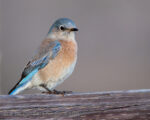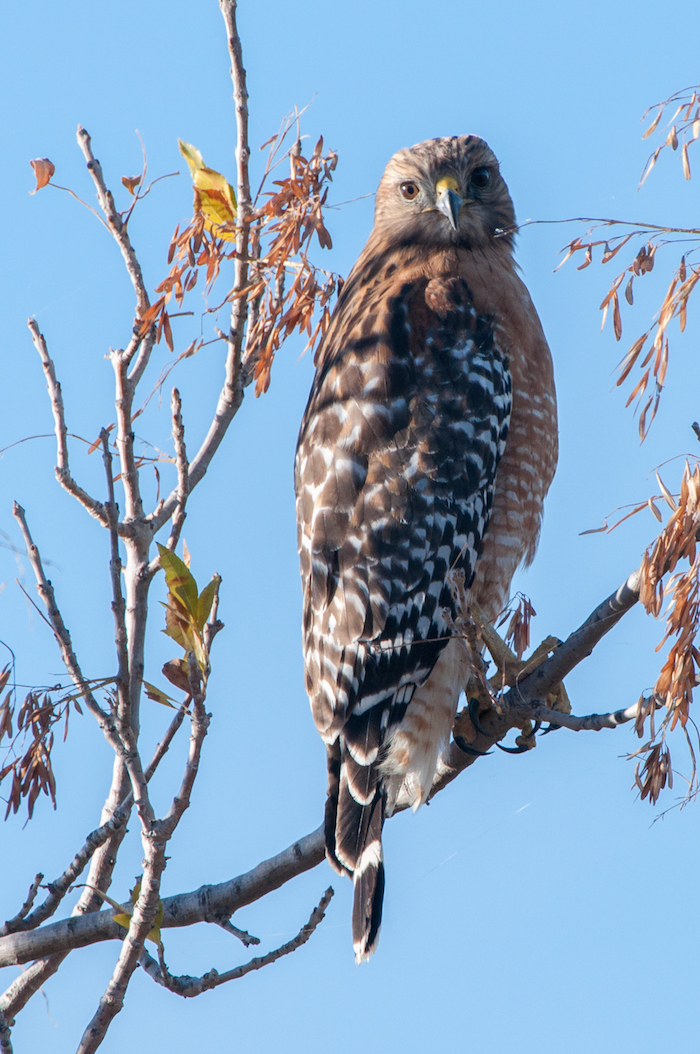
Red-shouldered Hawks have the loudest calls of any hawk species, and are probably the noisiest of all the birds of prey. One immediately knows of their presence when hearing their loud, high-pitched “Kee-yah, Kee-yah” calls while they are perched somewhere close or are flying overhead.
They are very beautiful and colorful members of the genus Buteo, with red shoulders and breasts. The black barring on their tails and wings give those body parts a checkered look. They may circle overhead with wings and tails spread out or fly in the open in their distinctive “Flap-flap-glide” flight pattern.
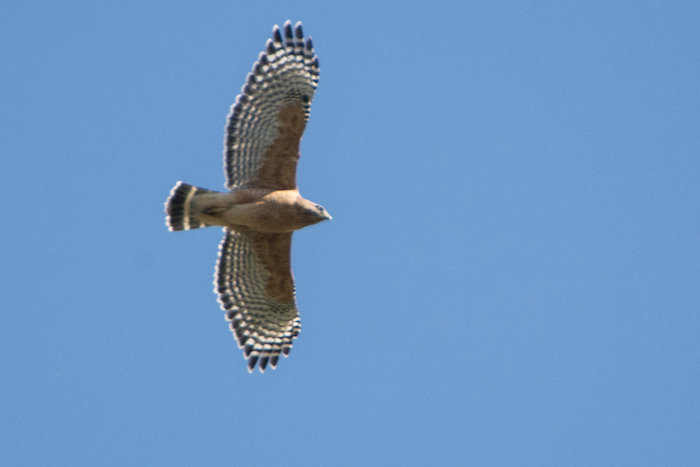
They feed on a variety of creatures: lizards, snakes, frogs, small mammals, crayfish and sometimes small birds. They often perch hunched over, looking for their prey to appear below, peering down so it seems they are looking at their toenails. They sit quietly until they sight their prey, then drop quickly, seizing the unsuspecting rodent or amphibian in their strong talons. A crayfish dinner requires a different approach. The hawk apparently sights the crayfish from the air and if unable to drop directly on its prey, it must wade into the shallow water. Fortunately the Red-shouldered hawk has fairly long legs for a raptor, which enables it to wade successfully to grasp the crayfish in its very strong talons.
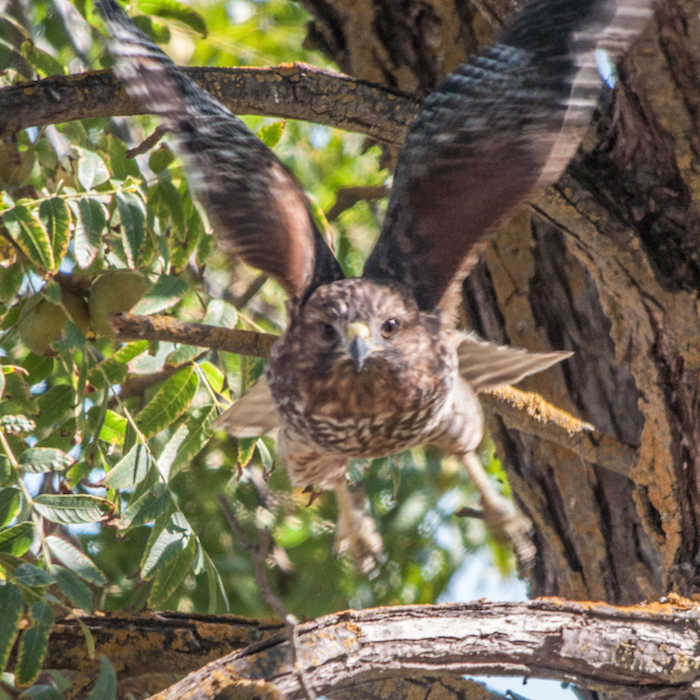
The breeding habitat of monogamous red-shouldered hawks is usually among deciduous trees or mixed wooded areas, most often very near water. Our yard along the Sacramento River attracts this hawk species since it has tall trees and water all year long. April 2019 found a pair of these hawks beginning to build a nest in the forked branches of a very tall sycamore tree in our side yard. The female red-shouldered is noticeably larger than the male, which is true of most birds of prey. The female is built to lay eggs and brood the young and the male must be quick enough to capture food. Both sexes share the nest-building duties, bringing sticks and moss to the chosen nesting site. The female usually lays from 3 to 4 eggs in the nest and begins sitting on the eggs after the first egg is laid, so hatching is “asynchronous.” The first chick may hatch a week before the last.
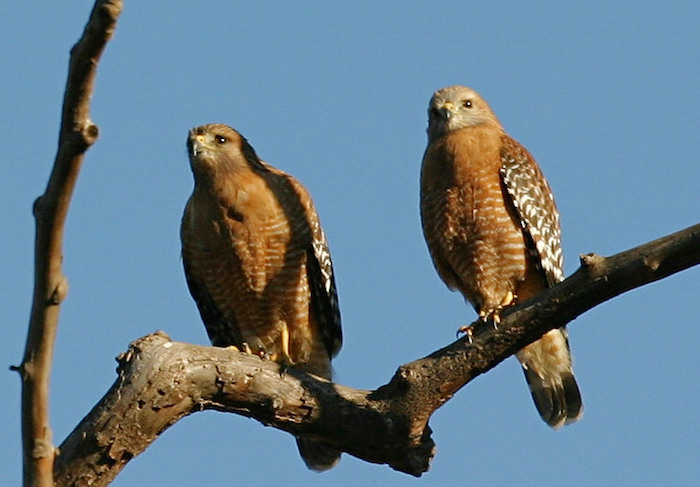
Hatchlings may be brooded almost constantly by the female for several weeks with the male providing most of the food for her and the young. Our red-shouldered hawk nest was so high in the tree that we did not know when the chicks hatched, and it was a while before we saw the fuzzy, fluffy young peering over the edge of their nest. We saw only two young with their curved and large bills. We kept our spotting scope on the nest constantly but it was 50 feet+ up in the sycamore tree. The late afternoon sun made the hawklets pant so we were glad when they declared their independence on July 4th and began exercising their wings by flying high up from tree to tree. We could tell when Mom and Dad fed them as they approached with their loud “Kee-aah kee-aah” cries.
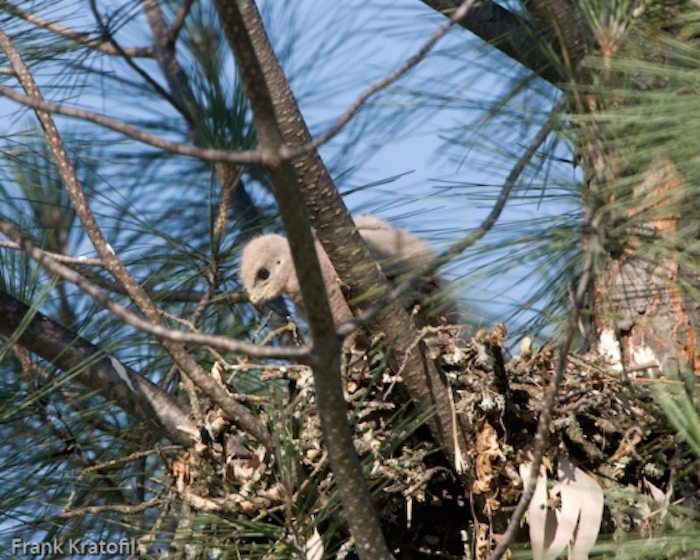
Under the hawk nest and around our yard we began finding “hawk pellets”. We knew owls regurgitated undigested parts of their diet such as feathers, bones and fur but we learned something new when hawk pellets began showing up. Almost every pellet contained some undigested part of a crayfish such as a small pincher or reddish colored shell.
Researchers find that hawk pairs use the same nest year after year simply by adding more nesting material and making it ready for another family. We hope this happens with our red-shouldered pair.

